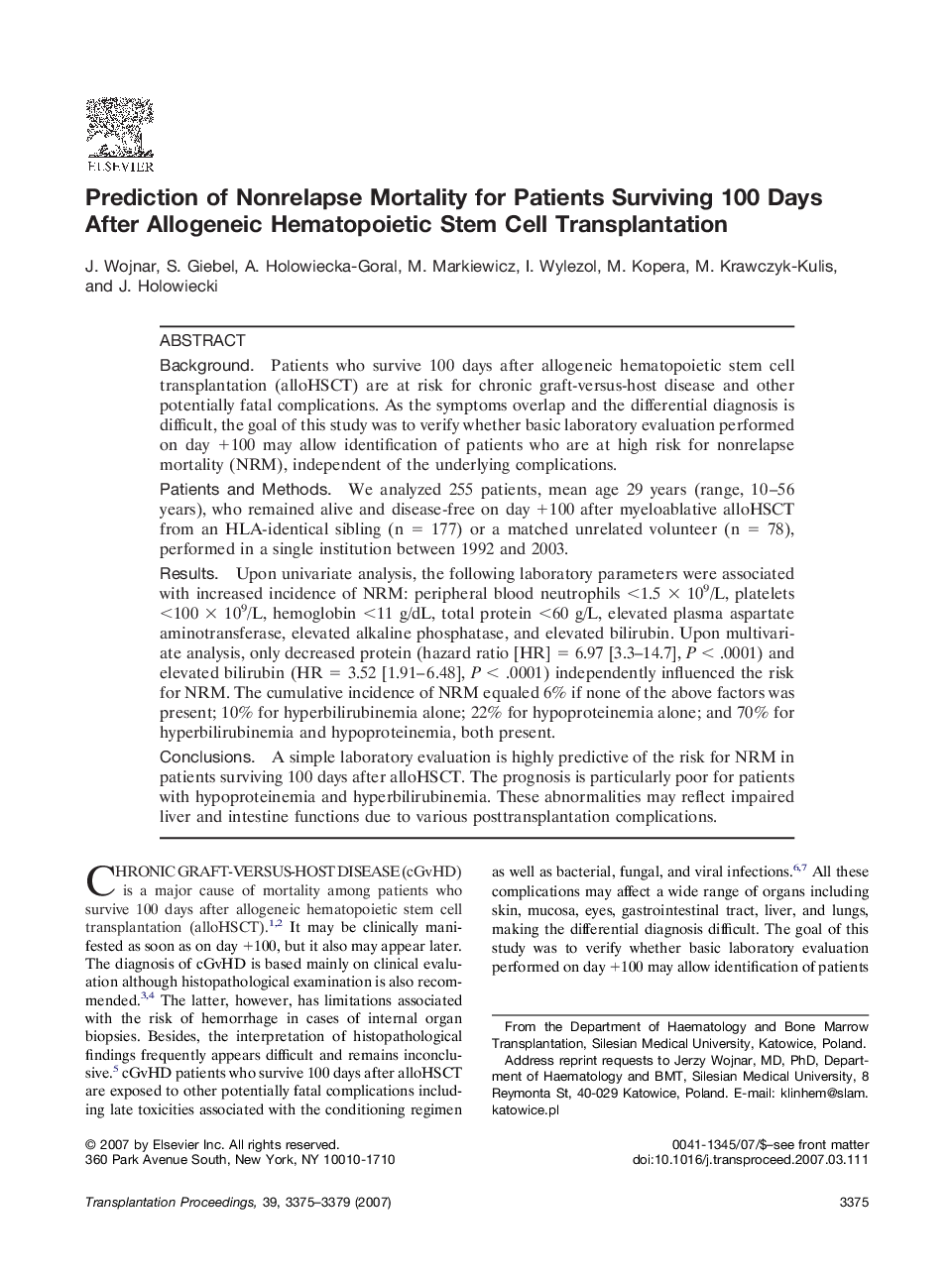| Article ID | Journal | Published Year | Pages | File Type |
|---|---|---|---|---|
| 4262790 | Transplantation Proceedings | 2007 | 5 Pages |
BackgroundPatients who survive 100 days after allogeneic hematopoietic stem cell transplantation (alloHSCT) are at risk for chronic graft-versus-host disease and other potentially fatal complications. As the symptoms overlap and the differential diagnosis is difficult, the goal of this study was to verify whether basic laboratory evaluation performed on day +100 may allow identification of patients who are at high risk for nonrelapse mortality (NRM), independent of the underlying complications.Patients and MethodsWe analyzed 255 patients, mean age 29 years (range, 10–56 years), who remained alive and disease-free on day +100 after myeloablative alloHSCT from an HLA-identical sibling (n = 177) or a matched unrelated volunteer (n = 78), performed in a single institution between 1992 and 2003.ResultsUpon univariate analysis, the following laboratory parameters were associated with increased incidence of NRM: peripheral blood neutrophils <1.5 × 109/L, platelets <100 × 109/L, hemoglobin <11 g/dL, total protein <60 g/L, elevated plasma aspartate aminotransferase, elevated alkaline phosphatase, and elevated bilirubin. Upon multivariate analysis, only decreased protein (hazard ratio [HR] = 6.97 [3.3–14.7], P < .0001) and elevated bilirubin (HR = 3.52 [1.91–6.48], P < .0001) independently influenced the risk for NRM. The cumulative incidence of NRM equaled 6% if none of the above factors was present; 10% for hyperbilirubinemia alone; 22% for hypoproteinemia alone; and 70% for hyperbilirubinemia and hypoproteinemia, both present.ConclusionsA simple laboratory evaluation is highly predictive of the risk for NRM in patients surviving 100 days after alloHSCT. The prognosis is particularly poor for patients with hypoproteinemia and hyperbilirubinemia. These abnormalities may reflect impaired liver and intestine functions due to various posttransplantation complications.
